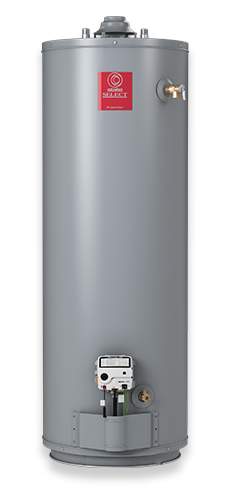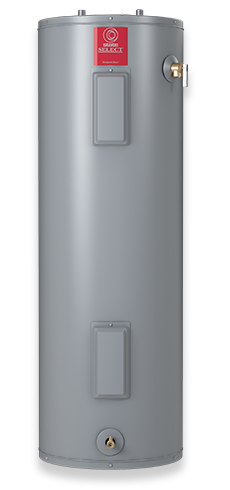State Select water heater troubleshooting involves checking for common issues like no hot water, strange noises, or leaks. Solutions often include resetting the thermostat, checking the pilot light, or inspecting the heating elements.
State Select water heaters are reliable, but like any appliance, they can encounter problems. Common issues users face include lack of hot water, unusual noises, and leaks. To troubleshoot effectively, start by verifying the power supply and ensuring the thermostat is set correctly.
If the pilot light is out, relight it according to the manufacturer’s instructions. Inspect the heating elements for signs of wear or damage. Regular maintenance, like flushing the tank to remove sediment, can also prevent many problems. Understanding these basics can help you address minor issues and decide when to call a professional.

Credit: www.statewaterheaters.com
Page Contents
Common Issues
State Select water heater troubleshooting often involves addressing common issues like pilot light failures or inconsistent water temperatures. Regular maintenance can prevent sediment buildup, ensuring efficient performance and prolonged heater lifespan.
No Hot Water
Check if the pilot light is on. If it’s off, relight it. Look at the thermostat settings. Ensure they are correct. Inspect the circuit breaker. It might have tripped. Reset if needed. Verify the gas supply. Make sure it’s on and working.
Insufficient Hot Water
Adjust the thermostat to a higher setting. Wait for the water to heat up. Flush the tank to remove sediment. Sediment reduces heating efficiency. Check the dip tube for cracks. A damaged dip tube mixes cold water with hot water. Inspect the heating element. Replace if it’s faulty.
Basic Checks
First, check if the water heater is plugged in properly. Make sure the circuit breaker is not tripped. Confirm the power outlet is working by plugging in another device. If the outlet works, the issue might be with the water heater itself. You may need to call a professional if the power supply seems fine.
Verify the thermostat is set to the desired temperature. A common setting is 120 degrees Fahrenheit. If the water is too hot or cold, adjust the thermostat. Wait for a few hours to see if the water temperature changes. If not, the thermostat might be faulty. Consider replacing it if adjustments don’t work.
Pilot Light Problems
Turn the gas control knob to the “Off” position. Wait five minutes for any gas to clear out. Turn the knob to “Pilot”. Hold down the reset button and use a lighter to light the pilot. Continue holding the reset button for a minute. Release the button and check if the pilot stays lit.
The thermocouple might be dirty or broken. Clean it with a piece of sandpaper. If cleaning doesn’t help, replace the thermocouple. The gas valve could also be faulty. In this case, professional help is needed. Check if there is enough gas in the tank. Low gas levels can cause the pilot to go out.

Credit: www.statewaterheaters.com
Heating Element Issues
First, turn off the power to the water heater. Use a multimeter to check the heating element. Set the multimeter to the ohms setting. Touch one probe to each terminal on the element. The reading should be between 10-16 ohms. A different reading means the element is bad.
Drain the water heater tank completely. Use a wrench to remove the old element. Install the new element by screwing it in tightly. Refill the tank with water. Turn the power back on. Check if the water heats up properly.
Water Temperature Fluctuations
Experiencing water temperature fluctuations in your State Select water heater? Common causes include faulty thermostats or sediment buildup. Regular maintenance can prevent these issues and ensure consistent hot water.
Thermostat Calibration
Thermostat calibration is very important. It keeps water temperature steady. Check the thermostat settings. Adjust if needed. The thermostat should be set between 120-140 degrees Fahrenheit. Incorrect settings can cause water temperature fluctuations. Always use a thermometer to check water temperature. If the thermostat is faulty, replace it.
Sediment Build-up
Sediment build-up can affect water temperature. It creates a barrier between the water and the heating element. This can lead to uneven heating. To fix this, drain the water heater tank. Flush out the sediment. Repeat this process every six months. This keeps the water heater efficient.
Strange Noises
Popping sounds often come from sediment buildup. Sediment forms at the bottom of the tank. Water trapped under the sediment gets heated. This causes the popping noise. Flushing the tank can fix this issue. Make sure to follow the manual for flushing instructions. Regular maintenance helps prevent sediment buildup.
A loose heating element usually causes a humming noise. The element vibrates when the water heater runs. Tightening the heating element should stop the noise. Always turn off the power before checking the element. A secure element will reduce the humming sound. Regular checks can keep the heater running smoothly.
Leaks And Drips
Experiencing leaks and drips with your State Select water heater? Identify common issues and find troubleshooting tips to fix them quickly. Ensure efficient operation by addressing minor problems before they escalate.
Checking For Leaks
First, inspect the area around the water heater. Look for any puddles or damp spots. Check the pipes and connections closely. Use a flashlight for better visibility. Feel for any moisture with your hands. Pay attention to the pressure relief valve. Leaks often occur here.
Fixing A Drip
Tighten any loose connections with a wrench. Replace worn-out washers to stop drips. Use plumber’s tape on threaded connections. This helps to seal them properly. If the drip continues, consider replacing the faulty valve. Always ensure the water supply is turned off before making repairs.
Maintenance Tips
Flushing your water heater helps remove sediment buildup. This can improve efficiency and longevity. To flush, turn off the power and water supply. Attach a hose to the drain valve and open it. Let the water flow out until it runs clear. Close the valve and remove the hose. Turn the water and power back on.
The anode rod protects your heater from rust. Inspect it every 6 months. Turn off the water and power. Locate the rod at the top of the heater. Use a wrench to remove it. If it looks corroded, replace it with a new one. This helps extend your heater’s life.

Credit: www.youtube.com
Frequently Asked Questions
Is There A Reset Button On A State Select Water Heater?
Yes, State Select water heaters have a reset button. It’s usually located near the thermostat.
Where Is The Pilot Light On A State Select Water Heater?
The pilot light on a State Select water heater is located near the bottom, behind an access panel.
Why Does My State Select Water Heater Keep Tripping The Reset Button?
Your State Select water heater may trip the reset button due to a faulty thermostat, overheating, or a bad heating element.
Why Is The Red Light Flashing On My State Select Water Heater?
The red light on your State Select water heater flashes due to a malfunction or error code. Check the manual for specific troubleshooting steps.
Conclusion
Troubleshooting your State Select water heater can save you time and money. Follow the tips provided to diagnose common issues. Regular maintenance ensures optimal performance and longevity. If problems persist, consult a professional for further assistance. Keep your water heater running smoothly and efficiently with these simple troubleshooting steps.
